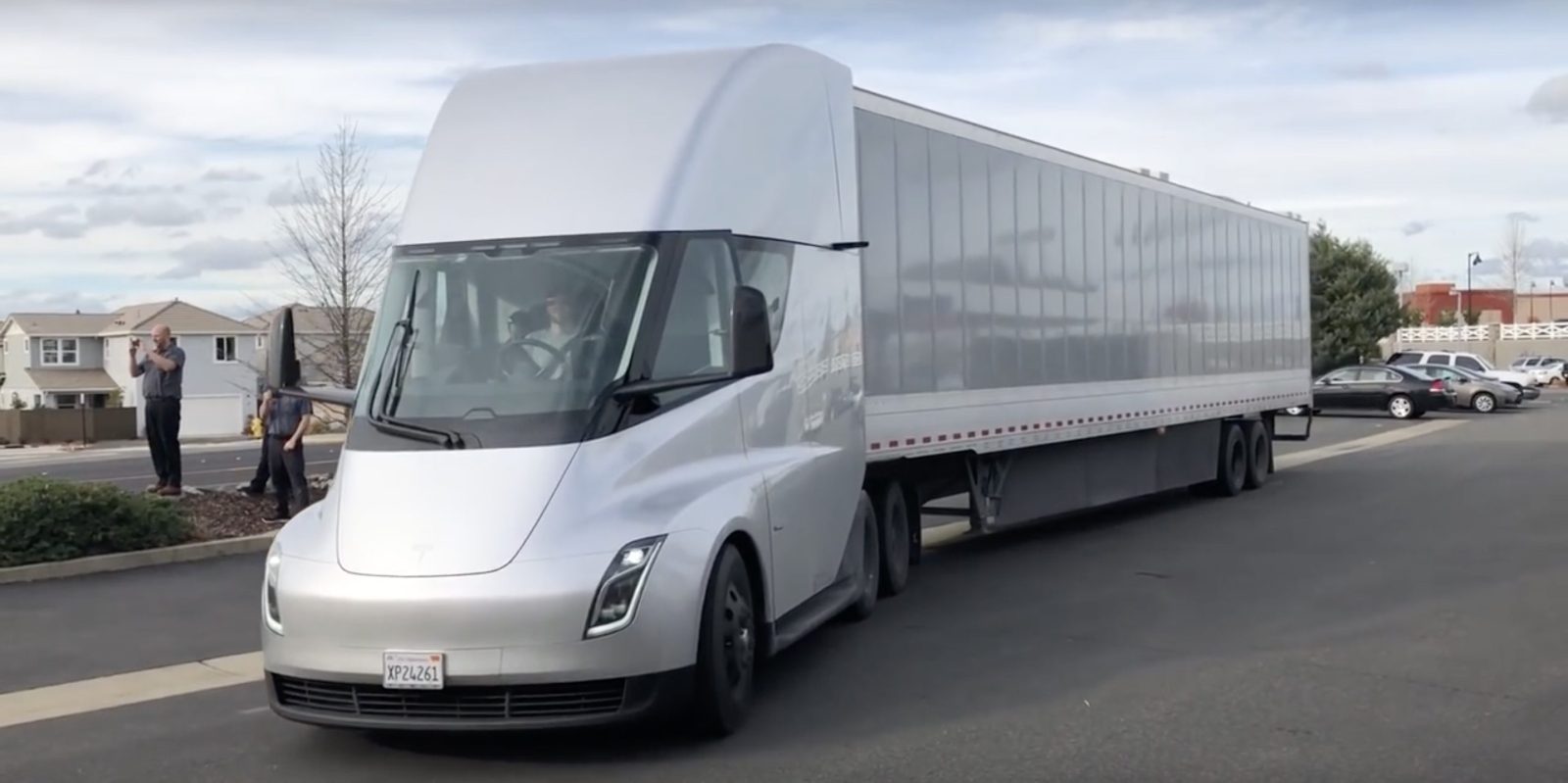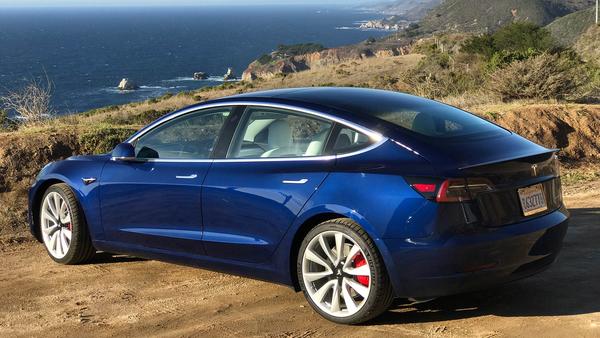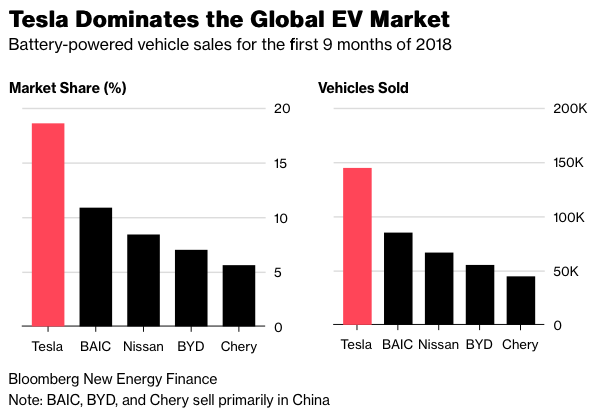BMW Group exceeded its goal and moves forward towards 500,000 plug-ins in 2019
BMW Group‘s plug-in electric car sales in December reached an all-time record of 17,252 (up 30% year-over-year) – almost 2,500 more than the previous record in November.
Plug-ins also took a record 7.4% share out of the total BMW/MINI car sales.
BMW i + BMW iPerformance + MINI PHEV sales worldwide – December 2018
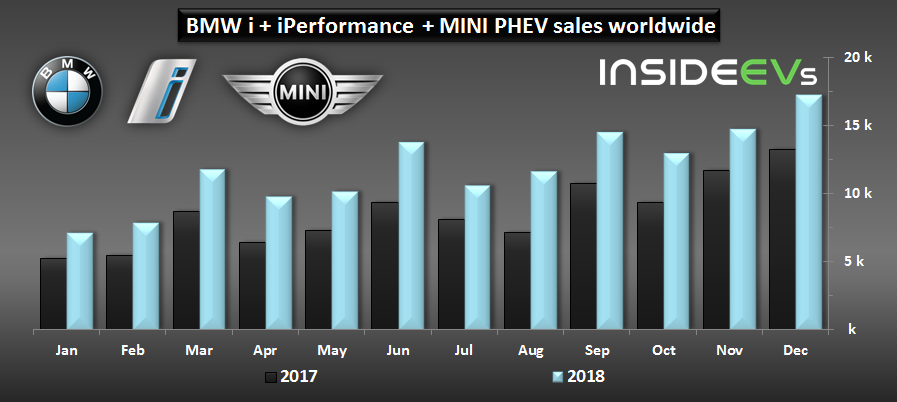
Total sales in 2018 amounted 142,617, which is slightly above the goal of 140,000 for the year. Compared to 2017, sales improved by 38.4%, which is reasonable.
The average share of plug-in cars out of total volume increased from over 4% to about 5.7%.
Around 75,000 (over 50%) of sale falls on Europe, where BMW brand accounts for over 16% market share of the plug-in segment. In Germany, the share is even higher at about 20%, while globally BMW takes 9% (third best behind Tesla and BYD). The biggest single market (country) is the U.S. with over 25,000 sales (and over 7% market share).
Pieter Nota, Member of the Board of Management of BMW AG responsible for Sales and Brand BMW said:
“We are delighted to have clearly surpassed our stated target of selling 140,000 electrified vehicles in 2018 and believe that by the end of 2019, there will be half a million electrified BMW Group vehicles on the roads. By 2025, the BMW Group will have at least 25 electrified vehicles in its model line-up, 12 of which will be fully-electric,”

In 2018, the best selling plug-in within the group was the BMW 530e iPerformance with 40,260 deliveries (12.2% of all 5-Series around the world).
The BMW i3 noted its fifth consecutive year of growth to 34,829 (up 10.6%) and there are already almost 135,000 i3 on the roads.
The MINI Countryman Cooper S E ALL4 noted 13,219 sales (13.3% of all MINI Countryman)
According to our data, BMW Group so far sold over 356,000 plug-in electric cars. The target for the end of 2019 is 500,000 cumulative sales (easy at the current rate).
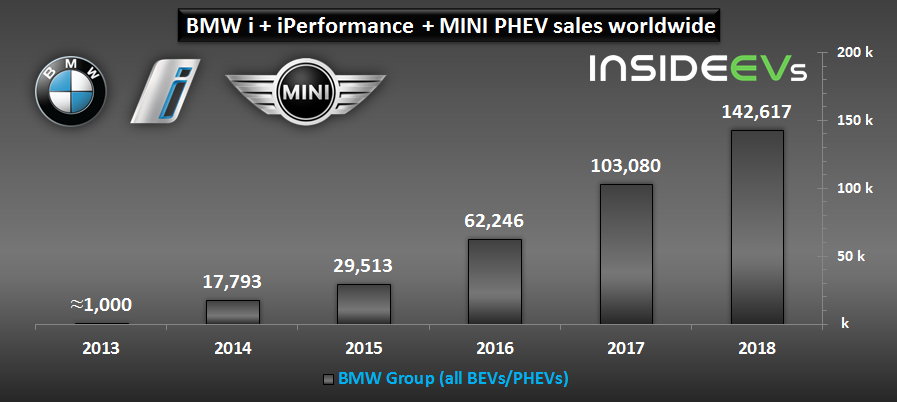
The future
Current lineup:
- BMW i3 (third model evolution with 120 Ah)
- BMW i3s
- BMW i8 Coupe (2nd model evolution)
- BMW i8 Roadster
- BMW 740e and BMW 740Le
- BMW 530e
- BMW 225xe Active Tourer
- MINI Cooper S E Countryman ALL4
- BMW X1 xDrive25Le (in China only)
Upcoming models for 2019:
- BMW 3 Series Sedan PHEV – new plug-in hybrid variant (2nd model evolution)
- BMW X5 PHEV
- MINI Electric
Upcoming models with 5th generation drive system:
- BMW iX3 in 2020 (first based on 5th generation drivetrain)
- BMW i4
- BMW iNEXT
Plan for 2025:
- at least 25 plug-in cars (12 BEVs and 13 PHEVs)
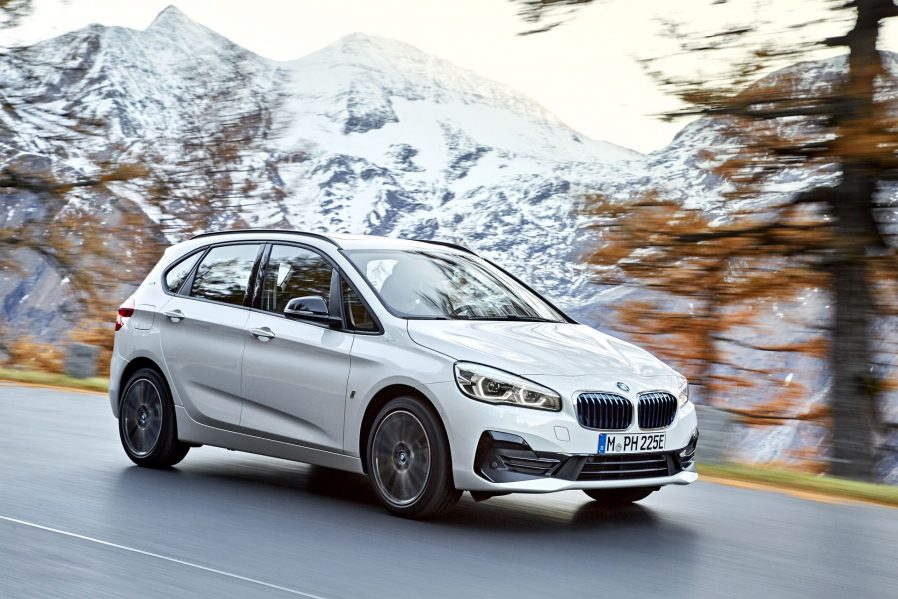
BMW 225xe iPerformance Active Tourer
More from BMW Group:
Strategic pillar
Electromobility is an essential pillar of the BMW Group’s corporate strategy Number ONE>NEXT and one of the company’s four key future-focused ACES topics (Autonomous, Connected, Electrified and Services/Shared). Having announced record spending on R&D in 2018, Harald Krüger confirmed, “We are implementing our strategy rigorously and investing extensively in the technologies of the future; expanding our leading role in electric mobility is a clear focus. 2018 was a significant year in this regard, with the announcement of major new strategic co-operations as well as the unveiling of several key new models,” Krüger said.
2018: Major milestones
FEBRUARY: The BMW Group announces a joint venture with the Chinese manufacturer Great Wall, with the initial focus of the cooperation on the joint R&D and local production of a MINI electric vehicle. This decision was taken for strategic reasons, in order to leverage the potential of the MINI brand. The BMW Group views China as the premium market of the future and it’s already the most active e-mobility market in the world, with huge potential. MINI is the perfect match for the market and the vehicles will be even more attractive to customers there if they are built locally.
MARCH: At the Geneva Motor Show, Harald Krüger confirms the BMW i Vision Dynamics will go into series production as the BMW i4, built in Munich from 2021.
APRIL: The BMW Concept iX3 is revealed at the Beijing Auto Show, the first full-electric model in the core BMW brand. It will be built in China and exported to the world, with a market launch scheduled for 2020.
MAY: The BMW i8 Roadster (combined fuel consumption 2.0 l/100 km; combined power consumption 14.5 kWh/100 km; combined CO2 emissions 46 g/km*) lifts the roof on the world’s best-selling plug-in hybrid sports car, helping overall sales of the BMW i8 to increase by 24% in 2018.
JULY: The BMW Group signs a long-term contract worth four billion euros with the Chinese company Contemporary Amperex Technology Co. Limited (CATL) to supply battery cells. The award of this contract is a decisive factor in CATL’s decision to build the world’s most advanced battery cell manufacturing facility in Germany. From 2021 onwards, cells for the BMW iNEXT – which will be manufactured at the BMW Group plant in Dingolfing – will be supplied by the new CATL plant in Erfurt. The BMW Group has thereby anchored the entire e-mobility value chain in Germany – from battery cell production through to the finished vehicle.
SEPTEMBER: The world’s press are granted a first look at the BMW iNEXT Vision Vehicle, the BMW Group’s pioneering spearhead for future innovation. It combines autonomous driving, connectivity, electrification and services while keeping the focus on the customer and offering them their new “Favourite Space”. The BMW iNEXT Vision Vehicle runs on the company’s fifth generation electric-drivetrain, with a range of over 600 km in the WLTP cycle.
OCTOBER: The BMW Group, Northvolt and Umicore form a joint technology consortium in order to work closely together on the continued development of a complete and sustainable value chain for industrialised battery cells for electrified vehicles in Europe. Given the sharp rise in demand for battery cells, the consortium also aims to close the life-cycle loop of raw materials to the greatest possible extent with comprehensive recycling.
NOVEMBER: Further development of BMW eDrive technology sees the launch of the BMW i3 (120 Ah) and the BMW i3s (120Ah) (combined fuel consumption 0.0/0.0 l/100 km; combined power consumption 13.1/14.0 – 14.6 kWh/100 km; combined CO2 emissions: 0 g/km*). The storage capacity of this pioneering car’s high-voltage battery has therefore been doubled since its original market launch in 2013. In everyday use, the two models are now able to cover a distance of 260 kilometres. Remarkable in many ways, the BMW i3 also bucks the usual sales curve: deliveries of the BMW i3 have increased every year since it was launched, with 2018 sales up 11% on the previous year.
NOVEMBER: The electric motors and high-voltage batteries developed for the BMW i3 will be used to power a city bus made by Karsan which is designed specifically for use in inner-city traffic. This follows the successful co-operation with the Deutsche Post subsidiary Streetscooter, where BMW i battery modules enable the street scooter to be used all day for delivering letters and packages without the need for interim charging.
2019: New launches
This year will see the launch of several new plug-in hybrids, including the new generation BMW X5 plug-in hybrid (combined fuel consumption: 2.1 l/100 km; combined power consumption: 23.0 kWh/100 km; combined CO2 emissions: 49 g/km*) and the new BMW 3 Series plug-in hybrid (fuel consumption: from 1.7 l/100 km; CO2 emissions: from 39 g/km*). These models will have the latest generation of electric drive trains, offering an electric range of up to 80 km according to the NEDC cycle. 2019 is also the year when the hotly anticipated MINI Electric will be revealed, which will be built in Oxford, UK.
Further ahead
With the launch of the BMW i3, the BMW Group established itself early as a pioneer in the field of electric mobility. By 2021, the BMW Group will have five all-electric models: the BMW i3, the MINI Electric, the BMW iX3, the BMW i4 and the BMW iNEXT. By 2025, that number is set to grow to at least twelve models. Including plug-in hybrids, the BMW Group’s electrified product portfolio will then comprise at least 25 models.
This wide range is possible thanks to highly flexible vehicle architectures and an equally flexible global production system. Going forward, the BMW Group will be capable of manufacturing models with all-electric (BEV), plug-in hybrid (PHEV) and conventional (ICE) drivetrains on a single production line. Its ability to integrate e-mobility in the production network enables the BMW Group to respond even more flexibly to the increasing demand for electrified vehicles. By the end of 2019, the BMW Group expects to have more than half a million electrified vehicles on the roads.
The BMW Group is currently developing the fifth generation of its electric drivetrain, in which the interplay of electric motor, transmission, power electronics and battery will be additionally optimised. Integrating the electric motor, transmission and power electronics also cuts costs. Another advantage is that the electric motor does not require rare earths, enabling the BMW Group to reduce its dependence on their availability. The fifth generation of the electric drivetrain will be installed for the first time in the BMW iX3 in 2020.
All performance, fuel consumption, emissions and range figures are provisional.
* Fuel consumption, CO2 emissions, power consumption and range have been calculated based on the new WLTP test cycle and adapted to NEDC for comparison purposes, dependent on the tyre format selected. In these vehicles, different figures than those published here may apply for the assessment of taxes and other vehicle-related duties which are (also) based on CO2 emissions.
Source: Electric Vehicle News

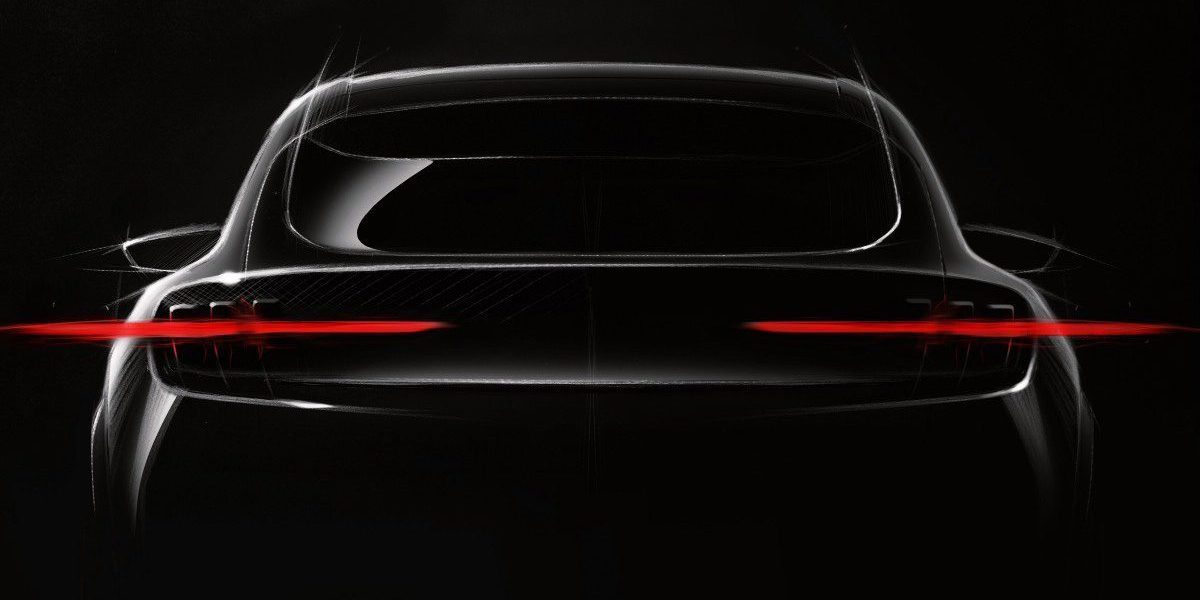
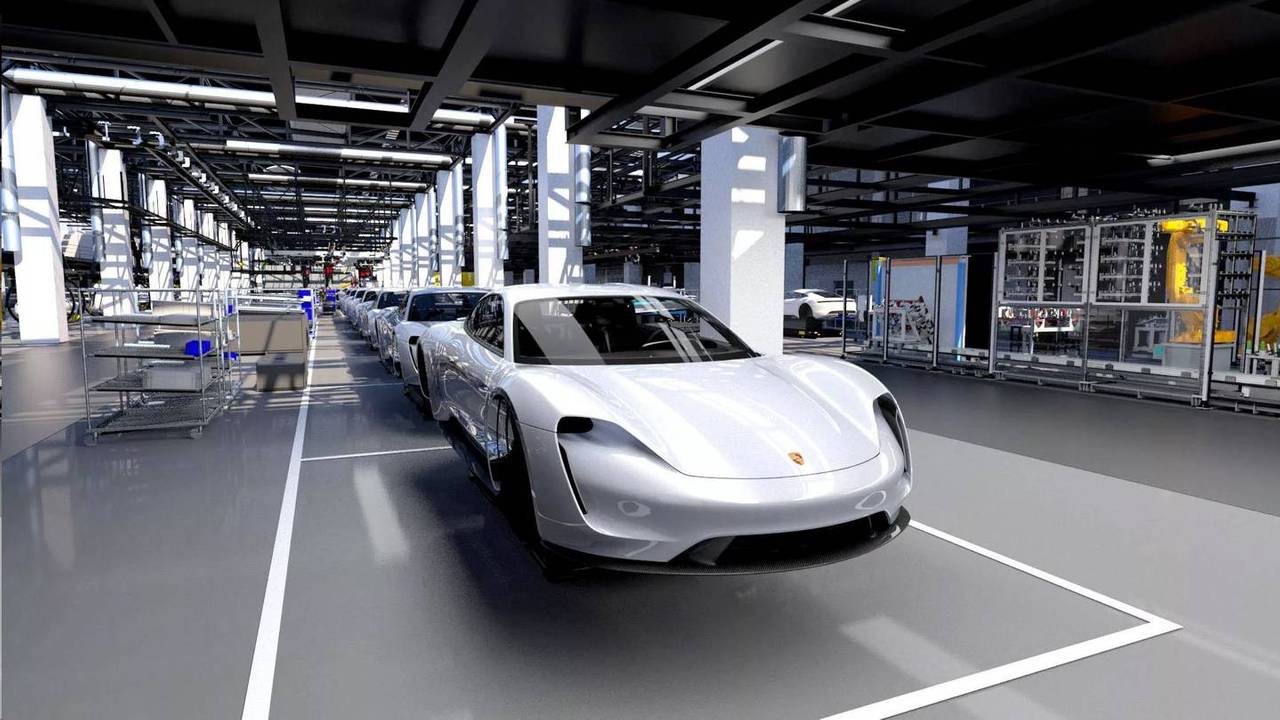
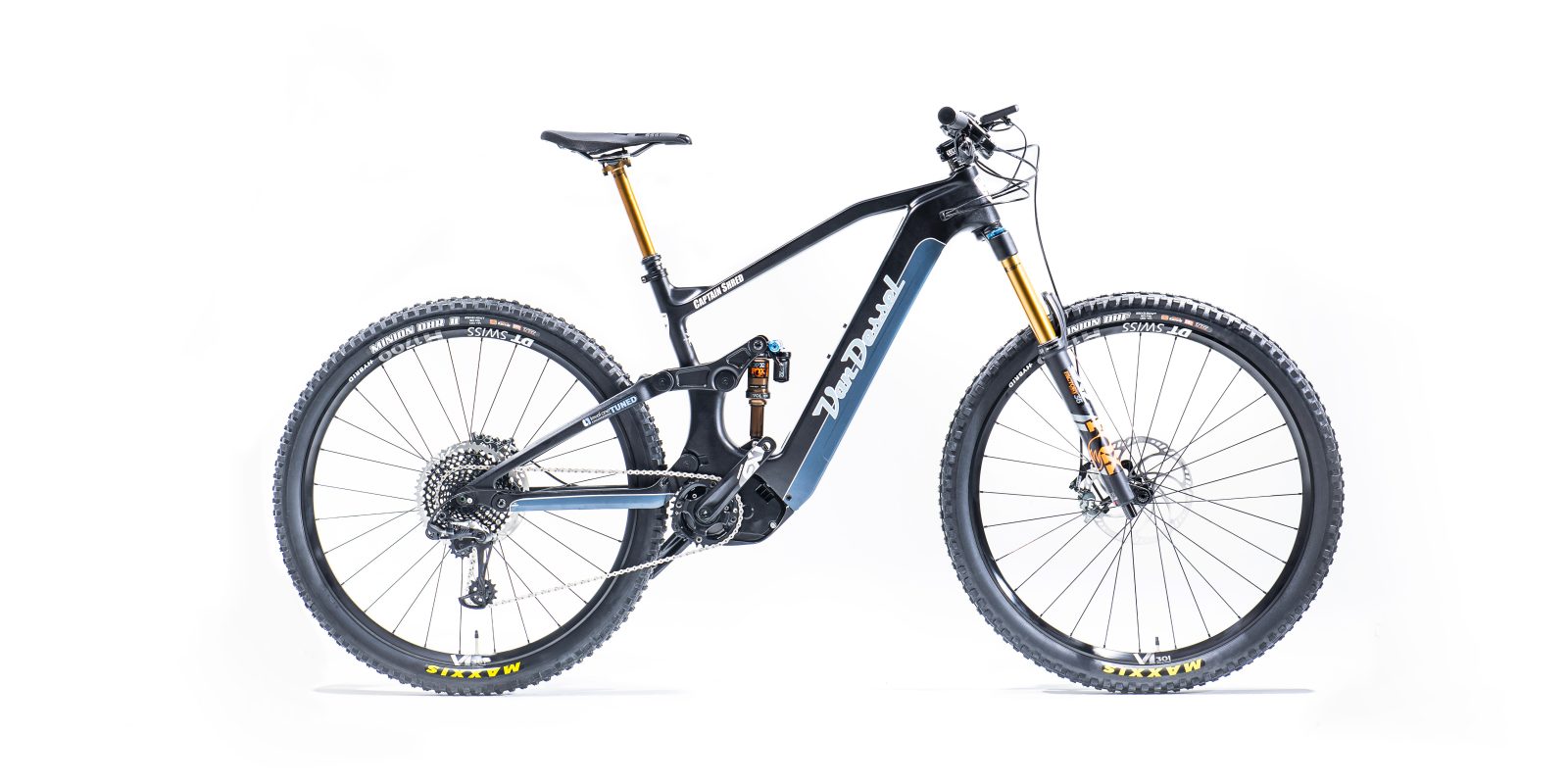
 buses will be used to demonstrate battery-electric vehicle technology on Silver Line routes. The project, which includes charging infrastructure, is supported by a grant through the Federal Transit Administration’s (FTA) Low and No Emission Vehicle Deployment Program (LoNo) and is a result of a partnership between New Flyer, MBTA, and the Center for Transportation and the Environment (CTE).As previously announced, New Flyer’s sixty-foot battery-electric transit bus is the first and only sixty-foot battery electric bus to complete the Federal Transit Administration’s (FTA) Model Bus Testing Program, qualifying it for FTA funding.”
buses will be used to demonstrate battery-electric vehicle technology on Silver Line routes. The project, which includes charging infrastructure, is supported by a grant through the Federal Transit Administration’s (FTA) Low and No Emission Vehicle Deployment Program (LoNo) and is a result of a partnership between New Flyer, MBTA, and the Center for Transportation and the Environment (CTE).As previously announced, New Flyer’s sixty-foot battery-electric transit bus is the first and only sixty-foot battery electric bus to complete the Federal Transit Administration’s (FTA) Model Bus Testing Program, qualifying it for FTA funding.” zero-emission buses offer a total capacity of 120-passengers, leading traction and gradeability, improved step height, an expanded door width, and the industry’s best entry ramp for passengers with mobility devices, making it an unmatched accessibility experience in public transit. Our zero-emission buses will help MBTA to not only reduce emissions in the Greater Boston area, but also deliver industry-leading passenger capacity to move the community with clean, efficient transportation.”
zero-emission buses offer a total capacity of 120-passengers, leading traction and gradeability, improved step height, an expanded door width, and the industry’s best entry ramp for passengers with mobility devices, making it an unmatched accessibility experience in public transit. Our zero-emission buses will help MBTA to not only reduce emissions in the Greater Boston area, but also deliver industry-leading passenger capacity to move the community with clean, efficient transportation.”